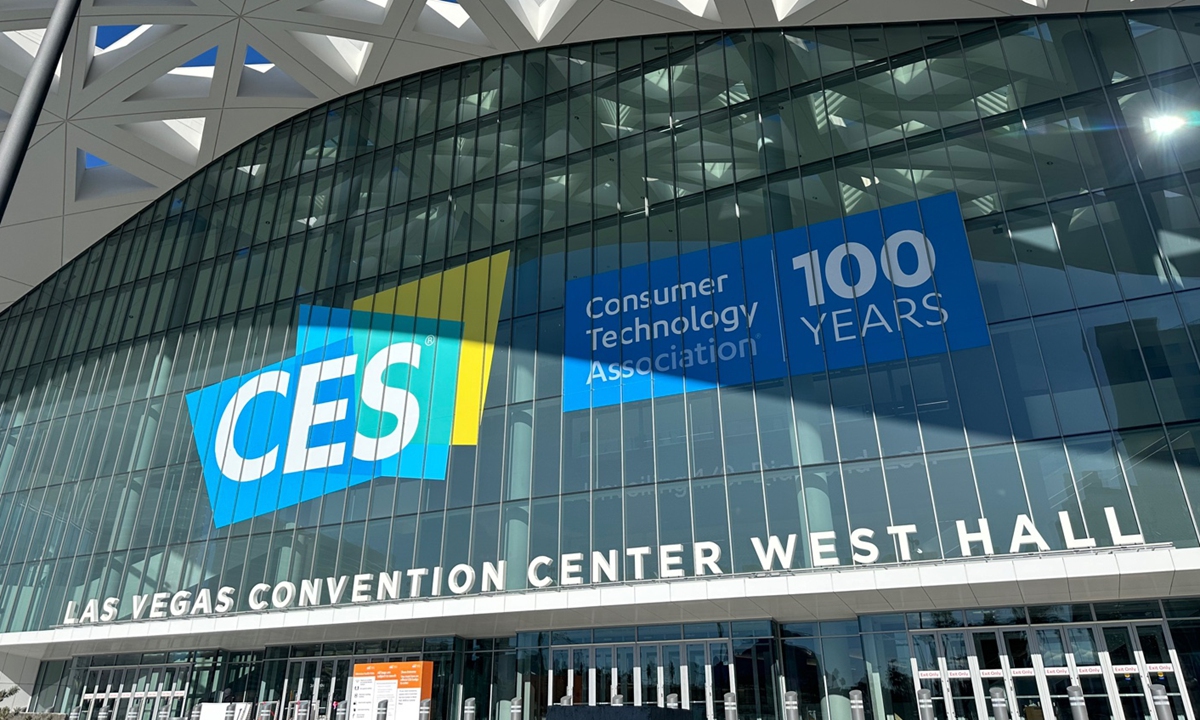
A view of the west hall of Las Vegas Convention Center in the US on January 8, 2024 Photo: VCG
Even as geopolitical tension remains a risk factor that global industry chains can hardly ignore, Chinese tech companies are making a comeback at this week's 2024 Consumer Electronics Show (CES) in Las Vegas, the US, a reminder that Chinese manufacturing's technological innovation will continue to march toward global markets.
As a platform known for showcasing cutting-edge technology from companies all over the world, exhibits at the CES capture global trends in the consumer electronics industry, which has evolved from personal computers and smartphones to wearables, virtual reality devices, new-energy vehicles, autonomous-driving technology and artificial intelligence over the years.
Chinese tech companies have become important forces at the CES, impressing attendees with innovative products and technological applications. According to the US Consumer Technology Association, the CES 2024 attracted over 4,000 exhibitors from more than 150 countries and regions.
At least 1,100 are from China, more than double the number last year.
Unsurprisingly, the return of Chinese tech companies drew a lot of attention at this year's CES with their new launches and novel products, including the latest AI-integrated apps and devices, smart cars and high-end displays.
Each year, the CES gives the world a glimpse into Chinese tech companies' advances and innovation strength, and the increased number of Chinese exhibitors and their cutting-edge tech products highlight the continuous development of Chinese manufacturing.
Many Chinese exhibits represent the direction of industries where Chinese players hold advantages, such as electric vehicles.
The development shows that despite US sanctions and containment, Chinese manufacturing has still managed to take an important position in global industry chains, with some Chinese manufacturers even able to compete with American peers in some areas.
If anything, US pressure has strengthened the resolve of Chinese companies to seek their own technological and business breakthroughs.
Even companies such as telecommunication giant Huawei, dronemaker DJI and some semiconductor firms that are missing from the CES due to US sanctions haven't slowed their pace in pursuing technological progress and market expansion. For instance, as the world's leading provider of telecommunication technology solutions, Huawei has become a global giant in terms of 5G, cloud computing and other fields, with businesses covering more than 170 countries and regions.
From another perspective, the absence of Huawei and DJI highlights how fiercely China and the US are competing for the future of global markets, and the absence of the world's leading companies also shows that the CES doesn't present the world's leading technologies as objectively and truthfully as it used to, a sign of the waning glow of American manufacturing and the American market.
Meanwhile, it is emerging technological advances that have provided strong support for the transformation and upgrading of Chinese manufacturing, which has become increasingly competitive in the global market. With outstanding advantages of technological innovation, more and more Chinese tech companies have seen new development opportunities and accelerated their expansion in the global markets.
Moreover, the competitiveness of Chinese manufacturing in the global markets lies not only in technology innovation, but also in the efficiency of industry and supply chains. For a long time, China's complete and mature industry chain has provided stable production capacity and supply capacity for Chinese manufacturing, helping lower production costs and improving products' competitiveness.
Chinese technology companies still face many challenges as they seek to expand their reach in global markets. Chinese manufacturing is at a crucial juncture of seeking breakthroughs in technological innovation and also international economic and technological cooperation.
Due to the uncertainties of the global political and economic environment and the rise in trade protectionism in the US and Europe, Chinese manufacturing is bound to face tough challenges when it comes to going global and consolidating its position in the global industry chain. Chinese companies need to be fully prepared for what's to come and have a firm determination to resist external pressure.




